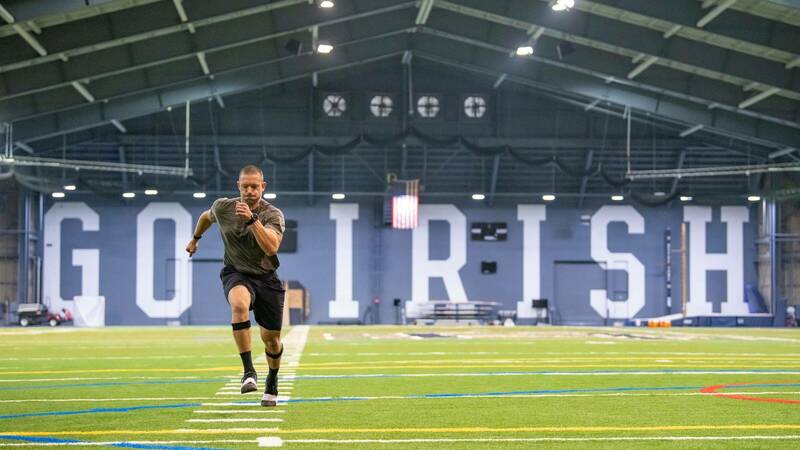
For football players, their full-on sprints, quick directional changes, and rapid accelerations can propel them from a spectacular catch to a thrilling touchdown.
But there’s no “muscle” with the potential to block the player’s progress more than his own hamstring muscles, a group of three that run down the back of each thigh. Hamstring injuries are among the most prevalent across a variety of sports, including football, soccer, and lacrosse.
Now, the University of Notre Dame’s Department of Applied and Computational Mathematics and Statistics (ACMS) has partnered with Notre Dame’s Department of Athletics on a project funded by the National Football League (NFL) to investigate potential risk factors for hamstring injuries. The aim is to harness the knowledge that can help better identify at risk athletes and even predict injuries before they occur.
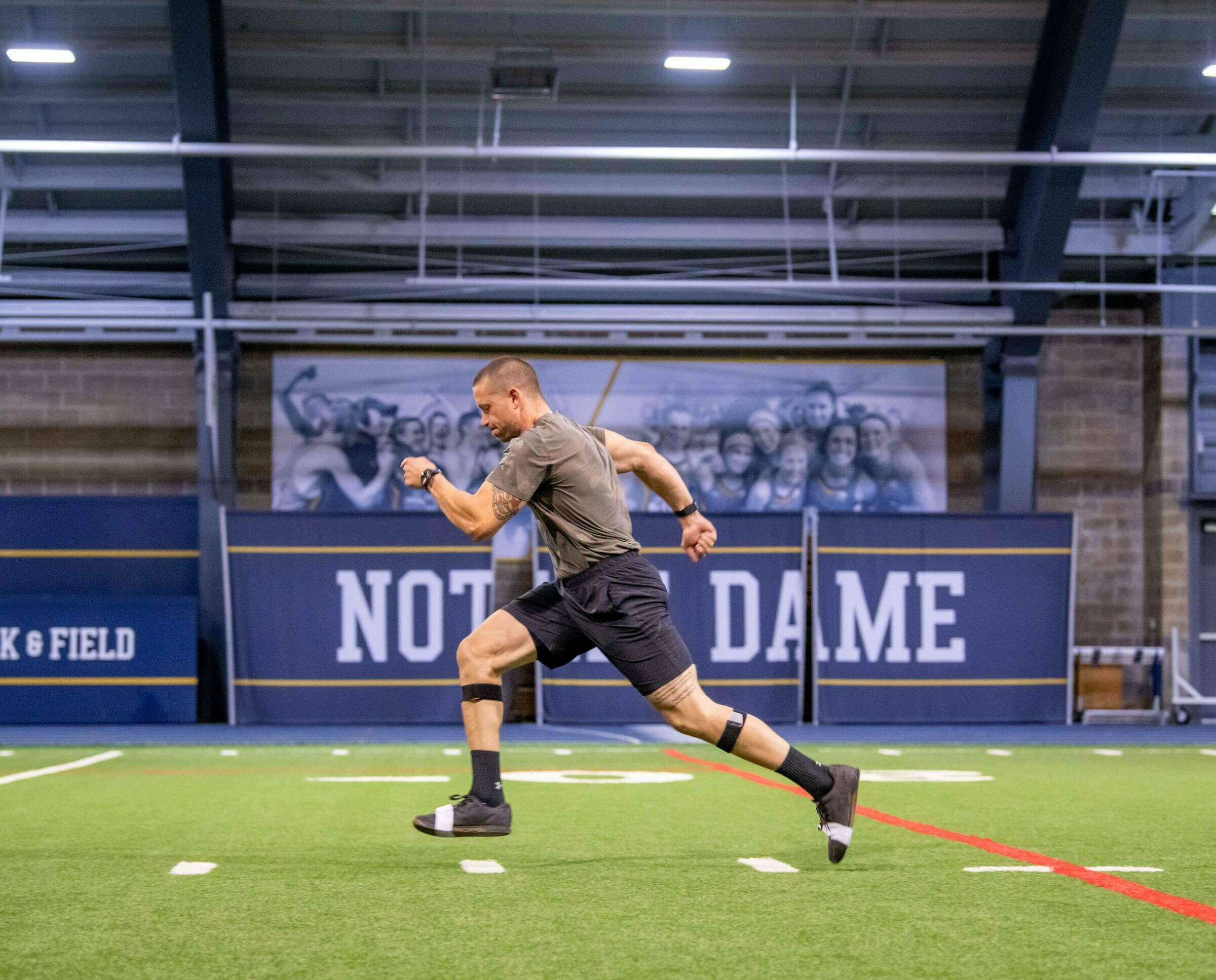
“Athletics is a fantastic place where we can use mathematical modeling, statistical analysis, and machine learning to apply all those techniques that we teach in the classroom to a real world scenario,” said Jonathan Hauenstein, professor and chair of the Department of ACMS.
The NFL Scientific Advisory Board in 2021 awarded $4 million to the University of Wisconsin and Australian Catholic University to develop the program, which kicked off in 2022. Notre Dame began collecting data this year. Other universities involved include Brigham Young University, the University of North Carolina at Chapel Hill, and Indiana University.
Approximately 70 players at Notre Dame underwent an MRI that created three-dimensional renderings of muscle volumes, tendon lengths, and other metrics. They also completed hamstring strength tests using a NordBord, a device the athlete kneels upon that measures strength in both hamstrings while the athlete tries to control a forward fall for as long as possible. A third test involved researchers fitting the players with seven sensors from the hips down. The sensors recorded information about leg movements while the men sprinted.
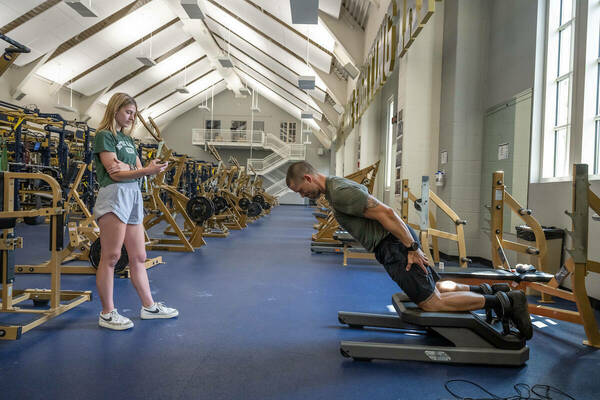
“The literature at this point is pretty mixed on running mechanics, and where that fits into an injury risk model,” said John Wagle, associate athletics director for sports performance. “Therefore, if we are able to gain clarity on the characteristics that matter for injury, then we can adjust our support from the Strength & Conditioning and Sports Medicine staffs to refine running mechanics.”
All data will be de-identified for use in the broader study, so that none of the schools will see each other’s information.
However, each school can use their own data from the time of collection, Wagle and Hauenstein said. The lead investigator for the study is Dr. Bryan Heiderscheit, Department of Orthopedics and Rehabilitation, of the University of Wisconsin-Madison.
Megan McGinty, a rising junior from Phoenix, Arizona, is planning to attend medical school and become an orthopedic surgeon. McGinty, a data science minor, worked as an assistant for the project as part of her inclusion in the ACMS Summer Undergraduate Research Program. She was advised by Alan Huebner, teaching professor and director of undergraduate studies in ACMS.
She helped apply some of the leg sensors, but usually worked behind the computer as the sensors fed data to the software program.
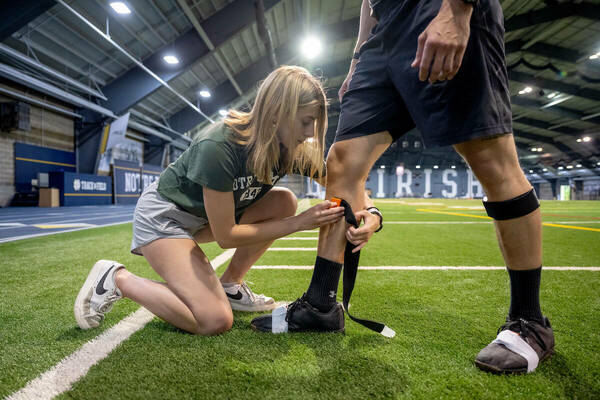
“I’m excited about the use of technology in the medical field,” McGinty said, adding that while she won’t see any of the final data, she was allowed to look at some of the MRIs as a future medical student.
A former soccer player, McGinty said she spent about an hour prepping for the athletes’ arrival so that she could set up the sensors and computer, but noted the work didn’t interfere with any practices.
“Megan did a tremendous job of integrating her work in a manner that still allows us to move towards the main goal, which is to prepare these young men to reach their ceiling and be in a position to win championships,” Wagle said.
Of course, universities are not the only ones that will benefit from the information collected about hamstrings: The NFL considers it to be crucial knowledge.
"At the league, we recognize the significant burden hamstring injuries have on our elite athletes year after year, and have dedicated resources to analyzing the occurrence and type of lower extremity injuries to better identify ways we can further reduce them," said Dr. Allen Sills, NFL Chief Medical Officer, in a press release.
"We're hopeful that through the data-based approach outlined by Dr. Heiderscheit and his team, this funding will enable them to develop scientifically-based strategies that will advance the health and safety of our players in the years to come."
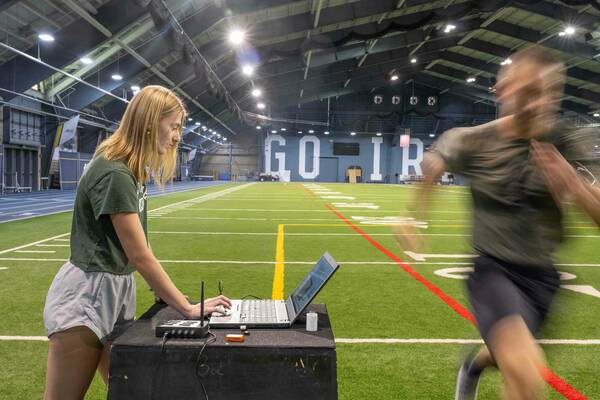
Wagle shared that he’s grateful to be working with the Department of ACMS and stressed that Notre Dame Athletics is fortunate to partner with the College of Science with the blessing of Santiago Schnell, the William K. Warren Foundation Dean. Wagle was grateful and excited to be able to work with Hauenstein, Huebner, and McGinty.
“Providing research opportunities is another way that we have the ability to be the best in the world at what we do,” he said. “We are very excited about this current project, but also about what we can build on in the future as we learn how these synergies can help both academics and athletics.”
Story by Deanna Csomo Ferrell; Photos by Barbara Johnston